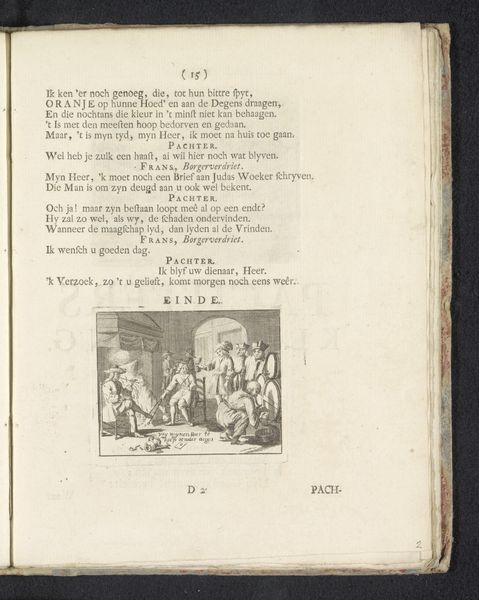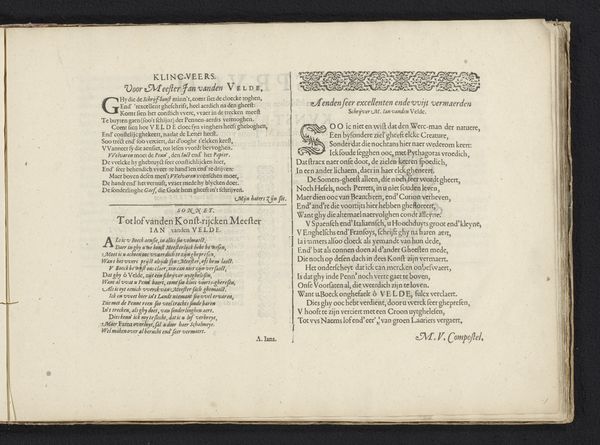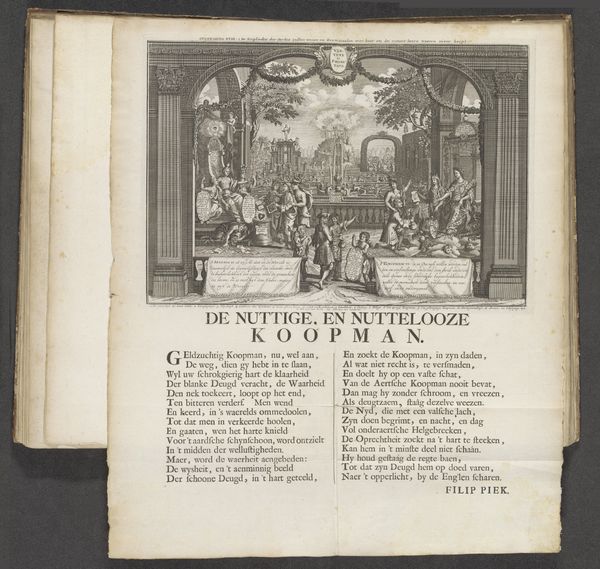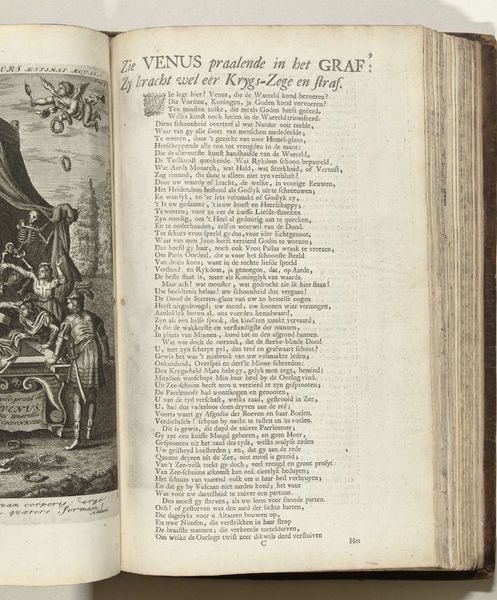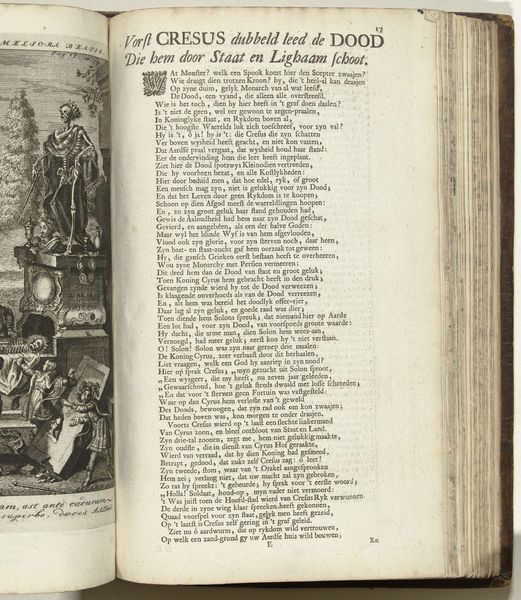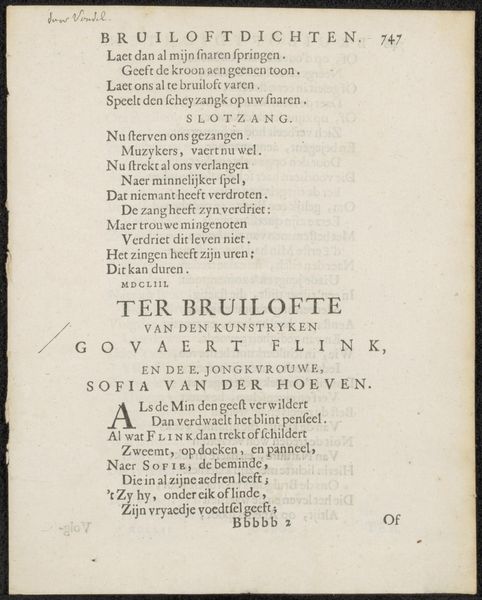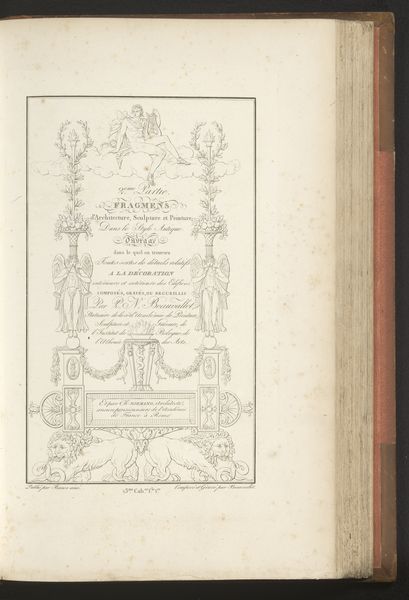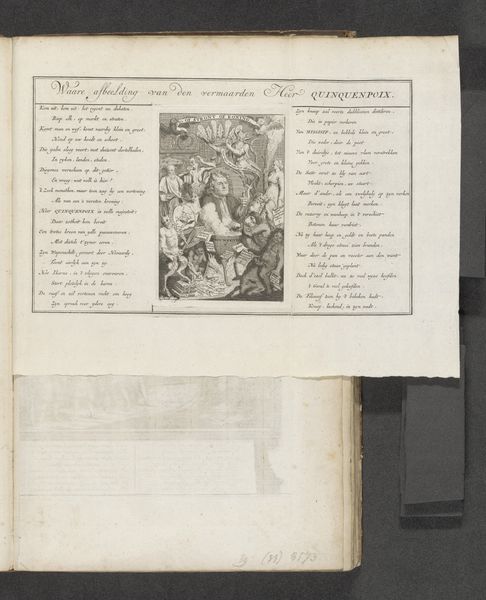
print, paper, engraving
#
narrative-art
#
dutch-golden-age
# print
#
old engraving style
#
paper
#
history-painting
#
engraving
Dimensions: height 136 mm, width 84 mm, height 162 mm, width 206 mm
Copyright: Rijks Museum: Open Domain
Curator: Here we have a print from 1732, "Waldenzen met brandende braamstruik en lelie," which translates to "Waldensians with burning bramble bush and lily." It's attributed to Marten Schagen and is currently held at the Rijksmuseum. It combines text with an engraving. Editor: My first impression is one of hushed resilience. There’s a stark contrast between the detailed, almost gothic script on the left and the symbolic imagery on the right, evoking a sense of both overt declaration and something concealed, perhaps even subversive. Curator: Precisely. This work references the Waldensians, a Christian religious movement originating in the 12th century who faced considerable persecution. The burning bramble bush, of course, recalls the story of Moses and symbolizes God's presence amidst suffering, while the lily speaks of purity and hope. Editor: I see the social commentary right away. By choosing these specific symbols, the artist is directly engaging with themes of resistance and the struggle for religious freedom. The very act of creating and distributing this image, knowing the potential repercussions, screams defiance against oppression. Curator: Absolutely. Notice also how the angels are positioned, almost guarding the central emblem. The flames don't consume; instead, they illuminate the word of God, a potent symbol of spiritual survival and divine protection within the context of the Waldensians' historical experience. Editor: The visual elements on the right are so explicitly staged, as are the little people standing together. I wonder how the intended audience at the time might have read those artistic choices against a backdrop of rigid sociopolitical hierarchies, whether it inspired courage or invited more scrutiny. Curator: What I find particularly compelling is how these ancient symbols transcend their immediate context, creating an enduring narrative. This image isn't just about one specific historical moment; it's about resilience and faith against seemingly insurmountable odds throughout history, isn’t it? Editor: Definitely, it’s a piece that connects the specific struggles of the Waldensians with broader historical movements of dissent and challenges to established power structures. Examining art such as this can spark important dialogues regarding historical and contemporary inequalities, I think. Curator: It really does, this artwork encapsulates layers of meaning within its engraved lines. A reminder of how faith and symbolic language unite through art. Editor: Yes, truly, this single sheet embodies multiple battles – spiritual, political, and artistic – waged across centuries. Food for thought, indeed.
Comments
No comments
Be the first to comment and join the conversation on the ultimate creative platform.
